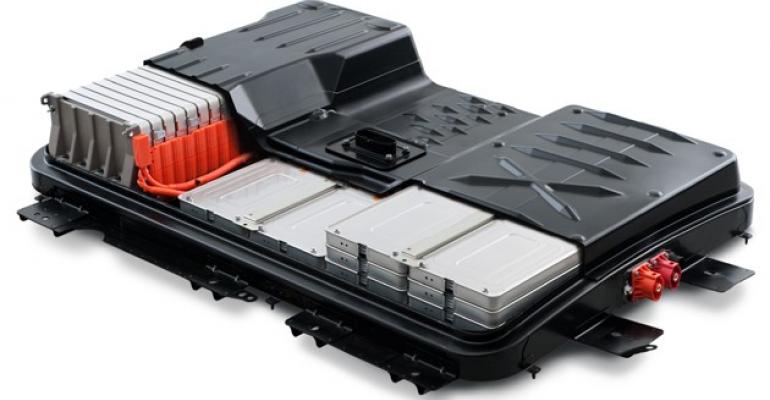European Union researchers declare progress in improving the performance of lithium batteries considered essential for electric vehicles to make a mass-market breakthrough.
The EU-funded researchers say they have developed a new high-energy, long-lasting lithium-sulphur battery. Their project, called Lithium Sulfur Superbattery Exploitating Nanotechnology, or LISSEN, wrapped up in August, having cost a total of €3.7 million ($4 million), with contributions of €2.5 million ($2.8 million) coming from the European Commission.
According to Bruno Scrosati, the project’s scientific coordinator and a retired professor at the University of Rome, Sapienza, LISSEN focused on incorporating innovative concepts into a lithium-sulfur battery, such as a non-lithium metal anode to improve safety, a solid-ionic liquid-type of polymer electrolyte to improve the easiness of battery fabrication and an advanced cathode morphology to improve kinetics.
The battery developed by LISSEN consists of a silicon-carbon composite anode and a nano-structured lithium sulphide-carbon composite cathode. It offers three times more energy density than a traditional electric car battery, which Scrosati says is derived from the electrochemical process of the battery, whose capacity is significantly higher than conventional lithium-ion batteries based on graphite-lithium metal oxide chemistry.
This advancement allows for long-range driving on a single charge and makes EVs more practical and competitive, which would be especially relevant for the U.S. market, Scrosati points out.
The battery is expected to be of use for both all-electric and plug-in hybrid vehicles. But according to Björn Hall, a project manager at Sweden-based Stena Metall Group, a consortium member, the research group still is testing prototypes and a LISSEN battery will not be on the market in the near future.
“There was a lot of progress during the project on the small scale, optimizing the electrolyte, improving the anode and cathode materials, etc.,” he explains, but adds a lot of work still must be done on a larger scale going from lab to production. His company has been looking at how these batteries could be recycled.
Scrosati says that whenever the battery is ready for commercial use, its cost is “expected to be lower than that of the conventional lithium-ion batteries, since the very expensive, cobalt-based cathode (in a Li-ion battery) is replaced by sulfur, i.e., a low-cost material.”
Other members of the 12-partner consortium include Volkswagen; U.K. chemical company Johnson Matthey; Spanish battery manufacturer CEGASA; German Aerospace Center; Consorsio Sapienza Innovazione, an Italian technological-research organization created by the University of Rome, Sapienza; Germany’s Center for Solar Energy and Hydrogen Research; and five universities in Sweden, South Korea, Italy and Germany.
Lithium-air, Lithium-Sulfur Batteries in Parallel Development
Another European Commission-backed project called STABLE wrapped up in August, having doubled the relatively short lifetime of lithium-air batteries – a potentially useful alternative to Li-ion batteries with higher storage capacity.
Lithium-air batteries integrate a metal-based anode and air-cathode that constantly extract oxygen from ambient air and require recharging far less often than their ion cousins. But the problem is they only can be recharged a limited number of times.
STABLE has boosted this to 151, up from 50, says a spokesperson at Swedish research firm Swerea. The company was involved in the environmental and lifecycle assessment side of the STABLE project.
Researchers hope to build on these advances so they can offer real advantages to electric cars. “It doesn’t make sense to use it right now, the environmental impact is too high…(but) in the future, it could be better than lithium-ion batteries,” the spokesperson says.
“Lithium-ion technology is still not satisfactory for long-distance electric-vehicle use due to their heavy weight, high cost and most importantly, their limited capacity…It is generally considered that the lithium air batteries will be the best alternative to the lithium-ion battery in the future,” says a spokesperson with participating technology company L’Urederra Fundación para el Desarrollo Tecnológico y Social. The Spanish company was responsible for developing and optimizing a lithium anode for the battery.
STABLE, which has a €3.4 million ($3.7 million) budget, tackled lithium-air batteries’ competitive disadvantage with ion batteries, which can be recharged between 400 to 1,200 cycles over their lifetime, according to European Commission data. The project aimed to increase the battery’s capacity to 100-150 cycles and demonstrate this in functional cells within three years with the emerging EV battery market in mind.
Researchers note the car’s range-per-recharge cycle would depend on the energy density, dimension and quantity of battery cells, the Swerea spokesperson says. However, estimates by the Massachusetts Institute of Technology and Yale University suggest a lithium-air battery could allow a vehicle to travel the 350-plus miles (564 km) expected from a tank of gasoline. IBM Research, meanwhile, says range could reach up to 500 miles (800 km) per charge.
That compares with some Li-ion batteries providing about 245 miles (395 km) per charge, such as the one used in Tesla’s Roadster e-vehicle, according to Tesla.
“We still have a lot of work ahead in order to bring our new batteries to the market, with challenges ranging from raw-materials production to the improvement of Li-air battery technologies and equipments,” says project coordinator Qiuping Chen, associate professor at the Polytechnic University of Turin, Italy. Other companies involved in the project included Spanish technology developer Acondicionamiento Tarrasense Associacion and ELAPHE Pogonske Tehnologije (Slovenia).The National University of Ireland, University College Cork (Ireland) and Sakarya University (Turkey) also participated.
– with Mandy Kovacs





